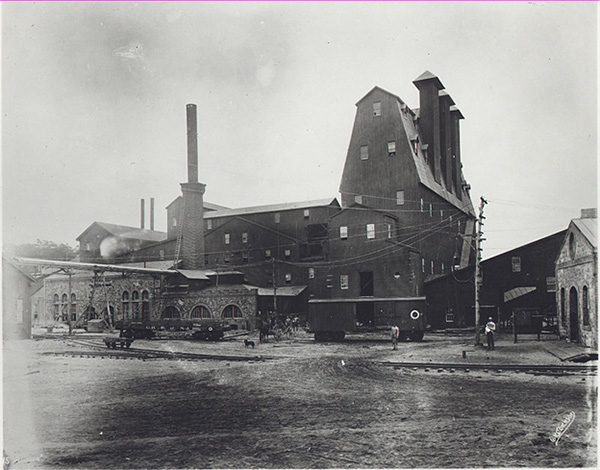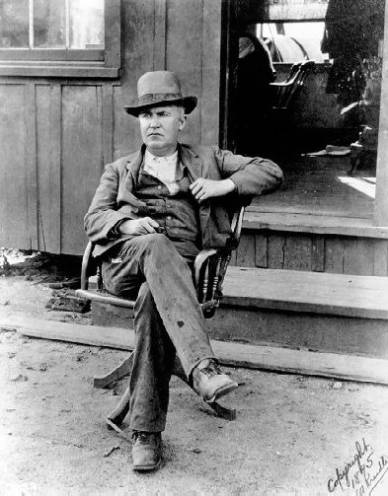
Historical situations repeat themselves, albeit with variations. Over a hundred years ago, iron and steel mills in the eastern United States were running short of cheap, high-quality iron ore. Thomas Edison responded by developing an efficient means of extracting pure iron from low-grade magnetite. After spending over a decade in attaining technical and commercial success, he admitted defeat as even cheaper high yield ore around Lake Superior drove him out of business. By 1901 Edison had spent $2.9 million-equal to $78 million in 2014-making electromagnetic ore separation practical. At the end of the nineteenth century, he lived through an experience that the entrepreneurs extracting crude oil from Alberta’s tar sands and the Bakken Shale Formation would find familiar.
In the 1880s, iron and steel manufacturers in the eastern United States were running short of cheap high-yield ore, just as steel production, largely for railroads and shipping, began octupling over the last two decades of the century. Edison had long been interested in the challenges of separating metal from earth and rock; in 1879 he organized the Edison Ore Milling Company to commercialize patents for separating the platinum needed for his electric light filament, as well as gold, from platinum ore tailings. A year later Edison began applying for patents for electromagnetic separation of ores, having concluded that the magnetic portion could be made “into the very best iron equal to Swedish bars at a cost which makes it far more valuable than . . . the gold tailings.”
In 1881, during a fishing trip he found a beach of black sand “spreading for miles” at Quogue on the north shore of Long Island, New York. After tests showed a 20 percent yield, he set up a unipolar electromagnetic separator at Quonochontaug Beach in Rhode Island and demonstrated it at the Paris Electrical Exhibition that year. Three iron and steel refineries put in orders and Edison and his crew were soon producing over seven tons of iron powder daily. Most furnaces could not work with the powder, however, and as the beach did not lend itself to industrial shipping Edison closed the business.
Five years later, during the sale of his interest in Edison General Electric, Edison returned to the prospect of revolutionizing eastern iron mining. One reason was the exhaustion of high quality iron ore in the northeastern states as newer Midwestern iron and steel mills exploited iron deposits around Lake Superior. Edison concluded he could supply eastern mills by purifying the magnetite in the Appalachian Mountains cheaply. Another reason was his marriage to Mina Miller; her father and brothers were connected to the mining and metals industries. A third reason was Edison’s status at the end of the 1880s. Newly rich through the sale of General Electric, Edison wanted to escape the corporate world he helped create, return to the simpler lifestyle of Menlo Park, and lead a small team to modernize the world’s oldest industry through automatic, efficient, electrical technologies.
The New Jersey and Pennsylvania Concentrating Works was capitalized at $30,000 in 1888. Edison dispatched prospectors to survey ore deposits methodically from the Great Smoky Mountains to southern Canada with a magnetometer. The purchase of 19,000 acres of magnetite deposits in northwestern New Jersey provided a location accessible by railroad from his West Orange laboratories and within 75 miles of many mid-Atlantic iron mills. Between 1887 and 1891 Edison oversaw the installation of steam-driven rock crushing machines to turn boulders into powder that could be electromagnetically separated. Dynamite broke out boulders the size of file drawers, which were moved by narrow-gauge rail to the mill. There the rail cars tipped them onto rubber-belted conveyors leading to iron rollers that broke them into pieces, which were conveyed to a set that reduced the rock to fragments; these were ground to powder. An endless chain of baskets brought this to the drying mill and the 480 magnets of the seven-story separator.

The challenge was to process at least 6,000 tons of ore daily. Difficulties with the rollers, belts, weather and wet rock powder, however, resulted in the deaths of six workers and frequent delays. The process wore out the crushers and generated enormous clouds of damp rock dust, choking the men, blocking the magnets, and clogging the screens. Improving one stage meant adjusting and often expanding the others, giving rise to new problems. Edison learned that Bessemer blast furnaces could not smelt the powder, which also contained too much phosphorus and not enough iron. Returning to his West Orange chemistry lab, Edison worked with a team to make a binder to mold the powder into solid yet porous, waterproof briquettes similar in form to those used in cookouts.
By 1893, Edison had raised his company’s capital to $1.5 million by selling his General Electric shares at the bottom of the Depression that year, and he was employing 145 increasingly disillusioned men, largely to quarry the ore. Along with new machinery, he built 50 cottages and a company store with a post office in what became the first Edison, New Jersey. Edison designed his own studded crushers that enabled the use of larger boulders lifted by the world’s largest steam shovel. The Depression of 1893 dried up the demand for iron and lowered its price; when business recovered, the newer, higher capacity Midwestern mills contributed to a permanent price drop to less than four dollars a ton. Edison had predicated his business on at least six dollars a ton, and despite successful deliveries in 1897-98 for Bethlehem Steel, he could not make the costs work. Pulling on his right eyebrow in 1902, Edison was judicious about his personal losses: “Well, it’s all gone, but we had a hell of good time spending it.”

Instead he turned his crushing technology and his non-ferrous sand toward production of the world’s best Portland cement. Establishing a practically automated factory in Stewartsville, New Jersey, Edison significantly improved the quality and size of rotary kilns to roast the raw materials and forced established firms to upgrade their facilities to make more finely grained cement. Not until 1922, however, did the Edison Portland Cement Company become profitable, capping over 40 years of improvements in the efficiency of bulk materials processing.
One fine day, after visiting the Edison National Park site in West Orange, New Jersey, drive west on Interstate 80. Exit onto Route 15 North into the rumpled Appalachian hills of the Reading Spur in northwestern New Jersey, turn right on 517 into Ogdensburg, and right again onto Edison Road. After about two winding miles you’ll find a parking lot for the Sparta Mountain Audubon Sanctuary. Follow the trail, or walk into the underbrush on either side of the road; taking care not to step into them, you’ll see immense horseshoe-shaped pits cut into the rock. Return to the road, walk uphill and look for a level expanse in which deep square and rectangular holes appear, suggestive of a lost civilization. Brush aside the leaves to find rail track ballast and some of the smooth black briquettes that took Edison six years to perfect.
It’s difficult to imagine this park was once an industrial wasteland, a noisy strip mine operation smothered in coal smoke and rock dust. From this now peaceful location emerged the first modern systems engineering for the processing of bulk raw materials, Edison and his staff establishing techniques that saved energy, time, and labor in ways that are still being embroidered upon today. The oil entrepreneurs should be so fortunate when people look back at their legacies.
Further Reading
- Robert Conot, A Streak of Luck: The Life and Legend of Thomas Alva Edison (1979).
- Frank L. Dyer and Thomas C. Martin, Edison, His Life and Inventions (1910).
- Paul Israel, Edison: A Life of Invention (1998).
- Matthew Josephson, Edison: A Biography (1959, 2003).
- T. A. Edison, “Magnetic Ore Separator,” U.S. Patent 228,329.
- ________, “Composition Brick and Method of Making Same,” U.S. Patent 509,428.
- ________, “Rolls,” U.S. Patent 637,327.
- ________, “Apparatus for Burning Portland Cement Clinker,” U.S. Patent 802,631.
- Hidden New Jersey: “Where Edison Concentrated.”
- Tianyou Chai et al., “Integrated Optimization for the Automation Systems of Mineral Processing,” IEEE Transactions on Automation Science and Engineering 11, No. 4 (October 2014), p. 965-82.






